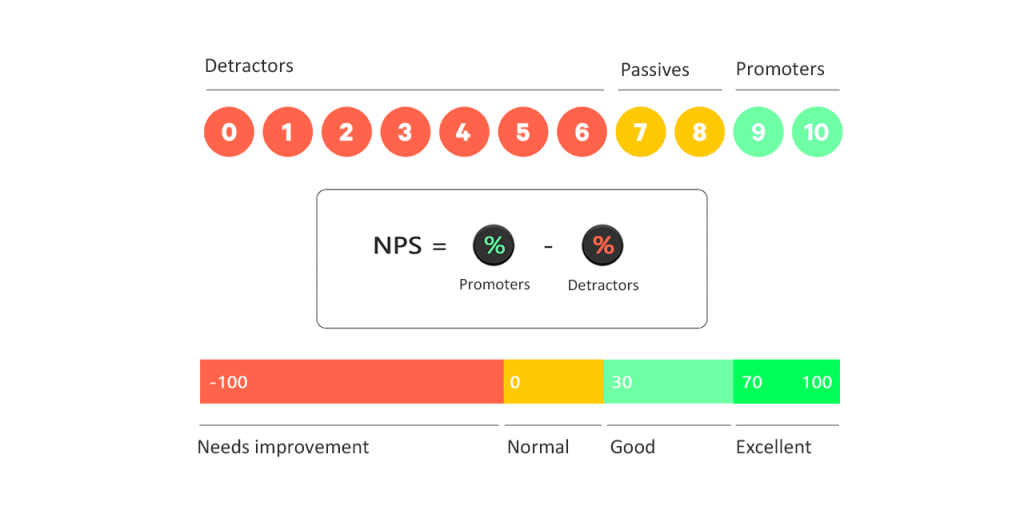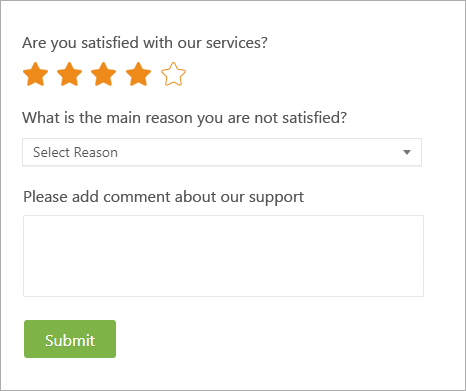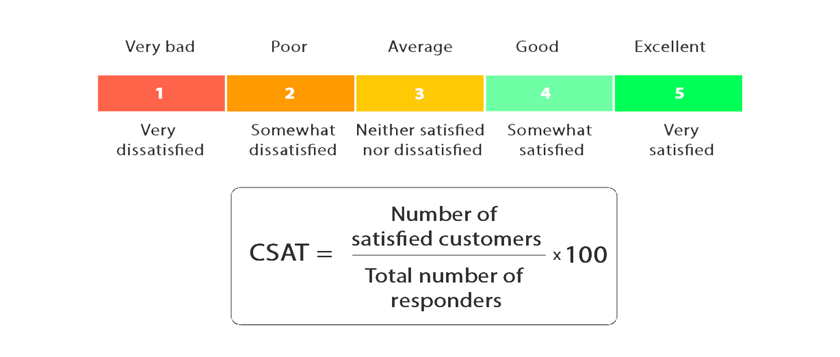Excellent customer support is about providing a delightful customer experience, and Customer Feedback Software along with Live Chat provide you with the ability to collect personal users’ opinions. While to see the overall picture of ROI and ensure general customer satisfaction, you need to use specific metrics.
Customer service success metrics can be divided into two main categories: support agent’s performance and customer’s satisfaction.
In this article, we’ll introduce the most essential metrics for each category, that you should measure and constantly improve.
Customer Support Team Performance Metrics
1. First Reply Time (FRT)
It’s a very important metric that shows how fast your support team reacts to incoming requests. Even though you can’t solve the problem immediately, it’s crucial to let the customer know, that their request is accepted and agents are starting to work on it. In case it is the first time they contacted your support, FTR can dramatically improve the quality of your further collaboration between the customer and your support cast. The smaller the magnitude is, the better it is for business.

2. Time to Resolution (MTTR)
This metric shows how much time is required to cope with incoming requests on average. It will reveal the productivity of your support team as well as how smooth your support workflow is. You should also take into consideration that average resolution time can depend on the complexity of the task: if the task is difficult – more time will be required to resolve it. You should lean forward to making this metric as small as possible.
3. First-Contact Resolution (FCR)
First Contact Resolution shows the percentage of issues resolved in one step. FCR detects how quickly a client’s issue can be resolved. It refers to the ability to manage customer’s requests submitted via any channel during the first outreach without a further follow-up needed. It is obvious that this simple metric impacts both customer satisfaction and the effectiveness of your customer service (see the following point).
FCR shouldn’t be very high or very low and here is why:
- If FCR is really high that could indicate that you have tons of easy-to-solve requests that could be resolved without interacting with support agents in most cases;
- If FCR is really low that means that your support workflow is not optimized enough and it takes extra time and steps to solve a ticket.
The best option is when the magnitude is somewhere in the middle leaning more to the upper limit.
To calculate first call resolution, simply divide the number of requests that were resolved at a first interaction by the number of all submitted tickets.
4. CES (Customer Effort Score)
Customer Effort Score evaluates the efforts that customers have to put to resolve their issues while interacting with the company service. The quality of communication ranges from low to high and detects the areas to be improved immediately.
Source: CheckMarket
CES is usually used to evaluate general performance of customer service.
Customer Effort Score is measured usually with a scale from 1 (easy) to 7 (complicated as hell). CES mostly is used as an alternative to CSAT as they basically serve the same purpose.
Like CSAT, CES is sent to the customer after his request has been solved. The lower CES is, the better it is for a business.
5. Average Response Time
Average response time or the average reply time is the average period during which support specialist addresses the customer’s request.
When submitting a support ticket, a user most probably faces a blocker that prevents them from the successful use of the product.
That’s why a quick resolution or at least feedback benefits customer satisfaction. From another side, long response time may evidence the complexity of the ussie or low efficiency of your support process.
6. Number of Support Tickets
The number of support tickets can reflect the users satisfaction with your company and/or product. The more requests you get the more imperfection your service has.
Complicated UX/UI and insufficient documentation are among the most common reasons for the growing number of support requests. It is important to watch this metric over time, and consider the number of customers.
7. CSC (Customer Service Cost)
Optimizing the cost of customer service doesn’t mean reducing investments into it. This metric is one of the key indicators of support efficiency potential.
Customer service cost is calculated by dividing the total amount of support expenses by the number of cases.
Furthermore, customer service cost should not be treated as an absolute number. To assess the cost efficiency, compare it to the total company or product revenue. And of course, strive for the best quality at a minimum cost.
In many cases using the right customer service software automation can dramatically improve the efficiency of the support team and accordingly reduce the costs.
Basic Customers Satisfaction Metrics
1. Net Promoter Score (NPS)

NPS measures a client’s willingness to recommend a product or service to a person he knows with a 1 to 10 scale. This single question will fully reveal the customer’s overall experience with your brand. Based on the 0 – 10 rating we can divide customers into the following categories:
- Detractors (0–6) – unsatisfied customers;
- Passives (7–8) – satisfied customers who do not want to share that;
- Promoters (9–10) – the most satisfied customers who are likely to share their positive experience with a product or service.

2. Customer Satisfaction Score (CSAT)

Customer Satisfaction Score is one of the most popular and widely used metrics. Basically, client is asked if he is satisfied with the product. There are different types of CSAT. Some of the most popular are:
- 1 to 10 scale;
- 1 to 5 scale;
- Yes or No;
- Open answer.

While NPS is focused on measuring long-term happiness, CSAT is targeted at measuring short-term happiness.
Conclusion
Nowadays we have an overload of data from different sources and channels. The true mastery is to know what data is relevant and whether you can interpret it the right way. In this post, we’ve figured out the most important customer service metrics and also dig a bit deeper into the purpose of each of them.
You can contact us or book a demo in case you want to know more about customer service metrics or how they are implemented in UseResponse.









